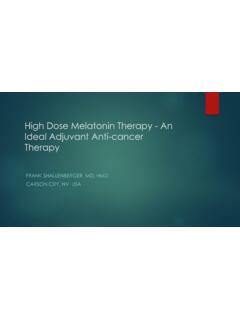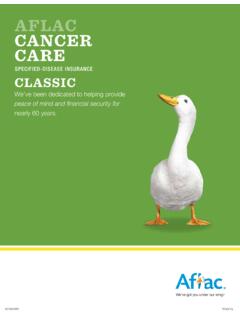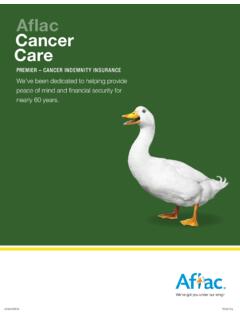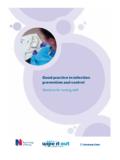Transcription of THE RIORDAN INTRAVENOUS VITAMIN C (IVC) PROTOCOL …
1 RIORDAN Clinic IVC PROTOCOL 1 | P a g e Grateful appreciation is expressed to the RIORDAN Clinic for permission to publish their complete INTRAVENOUS VITAMIN C ( I V C ) PROTOCOL . VITAMIN C (ascorbate, ascorbic acid) is a major water-soluble antioxidant that also increases extra- cellular collagen production and is important for proper immune cell functioning (Hoffman, 1985; Cameron, et al., 1979). It also plays key roles in L- carnitine synthesis, cholesterol metabolism, cytochrome P-450 activity, and neurotransmitter synthesis (Geeraert, 2012).
2 The RIORDAN intra- venous VITAMIN C (IVC) PROTOCOL involves the slow infusion of VITAMIN C at doses on the order of to grams (g) of ascorbate per kilogram (kg) body mass ( RIORDAN , et al., 2003). IVC use has increased recently among integrative and orthomolecular medicine practitioners: a survey of roughly 300 practitioners conducted between 2006 and 2008 indicated that roughly 10,000 patients received IVC, at an average dose of g/kg, without signif- icant ill effects (Padayatty, et al., 2010). While IVC may have a variety of possible applications, such as combating infections (Padayatty, et al.)
3 , 2010), treating rheumatoid arthritis (Mikirova, et al., 2012), it has generated the most interest for its potential use in adjunctive cancer care. VITAMIN C was first suggested as a tool for can- cer treatment in the 1950s: its role in collagen pro- duction and protection led scientists to hypothesize that ascorbate replenishment would protect normal tissue from tumor invasiveness and metastasis (McCormick, 1959; Cameron, et al., 1979). Also, since cancer patients are often depleted of VITAMIN C (Hoffman, 1985; RIORDAN , et al.
4 , 2005), replenish- ment may improve immune system function and enhance patient health and well-being (Henson, et al., 1991). Cameron and Pauling observed fourfold survival times in terminal cancer patients treated with INTRAVENOUS ascorbate infusions followed by oral supplementation (Cameron & Pauling, 1976). However, two randomized clinical trials with oral ascorbate alone conducted by the Mayo Clinic showed no benefit (Creagan, et al., 1979; Moertel, et al., 1985). Most research from that point on focused on INTRAVENOUS ascorbate.
5 The rationales for using INTRAVENOUS ascorbate infusions to treat cancer, which are discussed in detail below, can be summa- rized as follows: Plasma ascorbate concentrations in the millimo- lar (mM) range can be safely achieved with IVC infusions. At mM concentrations, ascorbate is preferen- tially toxic to cancer cells in vitro and is able to inhibit angiogenesis in vitro and in vivo. VITAMIN C can accumulate in tumors with signif- icant tumor growth inhibition seen (in guinea pigs) at intra-tumor concentrations of 1 mM or higher.
6 Published case studies report anticancer efficacy, improved patient well-being, and decreases in markers of inflammation and tumor growth. Phase I clinical studies indicate that IVC can be administered safely with relatively few adverse effects. The RIORDAN Clinic has treated hundreds of cancer patients (Figure 1) using the RIORDAN proto- col. At the same time, RIORDAN Clinic Research Institute (RCRI) has been researching the potential of INTRAVENOUS VITAMIN C therapy for over thirty years. Our efforts have included in vitro studies, animal studies, pharmacokinetic analyses, and THE RIORDAN INTRAVENOUS VITAMIN C (IVC) PROTOCOL FOR ADJUNCTIVE CANCER CARE: IVC AS A CHEMOTHERAPEUTIC AND BIOLOGICAL RESPONSE MODIFYING AGENT by Hugh RIORDAN , MD, Neil RIORDAN , PhD, Joseph Casciari, PhD, James Jackson, PhD, Ron Hunninghake, MD, Nina Mikirova, PhD, and Paul R.
7 Taylor RIORDAN Clinic IVC PROTOCOL 2 | P a g e FIGURE 1. Types of cancers treated with IVC by the RIORDAN clinic. clinical trials. The RIORDAN IVC PROTOCOL , along with the research results (by the RCRI and others) that have motivated its use, is described below. Scientific Background Pharmacokinetics VITAMIN C is water soluble, and is limited in how well it can be absorbed when given orally. While ascorbate tends to accumulate in adrenal glands, the brain, and in some white blood cell types, plasma levels stay relatively low (Keith & Pelletier, 1974; Hornig, 1975; Ginter, et al.)
8 , 1979; Kuether, et al., 1988). Data by Levine and coworkers indicate that plasma levels in healthy adults stayed below 100 micrometer microns ( M), even if grams were taken when administered once daily by the oral route. (Levine, et al., 1996.) Cancer patients tend to be depleted of VITAMIN C: fourteen out of twenty-two terminal cancer patients in a phase I study we depleted of VITAMIN C, with ten of those having zero detectable ascor- bate in their plasma ( RIORDAN , et al., 2005). This is shown in Figure 2. In a study of cancer patients in hospice care, Mayland and coworkers found that thirty percent of the subjects were deficiency in VITAMIN C (Mayland, et al.
9 , 2005). Deficiency (below 10 M) was correlated with elevated CRP (C-reactive protein, an inflammation marker) lev- els and shorter survival times. Given the role of VITAMIN C in collagen production, immune system functioning, and antioxidant protection, it is not surprising that subjects depleted of ascorbate would fare poorly in mounting defenses against cancer. This also suggests that supplementation to replenish VITAMIN C stores might serve as adjunc- tive therapy for these patients. When VITAMIN C is given by INTRAVENOUS infu- sion, peak concentrations over 10 mM can be attained (Casciari, et al.
10 , 2001; Padayatty, et al., 2004) without significant adverse effects to the recipient. Figure 3 (page 000) shows plasma ascor- bate concentrations attained via IVC infusion at the RIORDAN Clinic, while Figure 4 shows pharma- cokinetic data for two subjects given eighty-minute IVC infusions. These peak plasma concentrations are two orders of magnitude above what is observed with oral supplementation. This suggests that IVC may be more effective than oral supple- mentation in restoring depleted ascorbate stores in cancer patients.







